The Ara Pacis Augustae (Latin: Altar of Augustan Peace; commonly shortened to Ara Pacis) is an altar in Rome dedicated to Pax, the Roman goddess of Peace. The monument was commissioned by the Roman Senate on July 4, 13 BC to honor the return of the Emperor Augustus to Rome after three years in Hispania and Gaul, and consecrated on January 30, 9 BC. The monument consists of a traditional open-air altar surrounded by precinct walls which are pierced on two sides by openings, the entire structure elaborately and finely sculpted in Luna marble. Originally located on the northern outskirts of Rome, a Roman mile from the pomerium - the religious boundary marking the limits of the city of Rome - the Ara Pacis stood on the west side of the Via Flaminia, in the northeastern corner of the Campus Martius, the former flood plain of the Tiber River.
Gradually buried under thirteen feet of silt deposits, fragments of the structure were being discovered as early as the sixteenth century, but serious excavation only began after the turn of the twentieth. In 1938 it was reassembled in its current location, now the Museum of the Ara Pacis, but turned 90° from its original orientation so that the original western side now faces south. Both the original sheltering pavilion, built during the Fascist era - and whose construction involved the demolition of dozens of neighboring buildings - and its replacement, built in 2006, proved controversial. (Adapted from Wikipedia.)







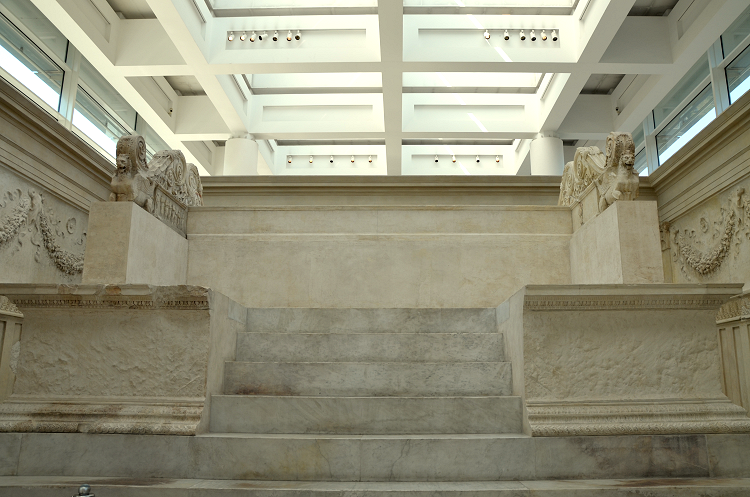








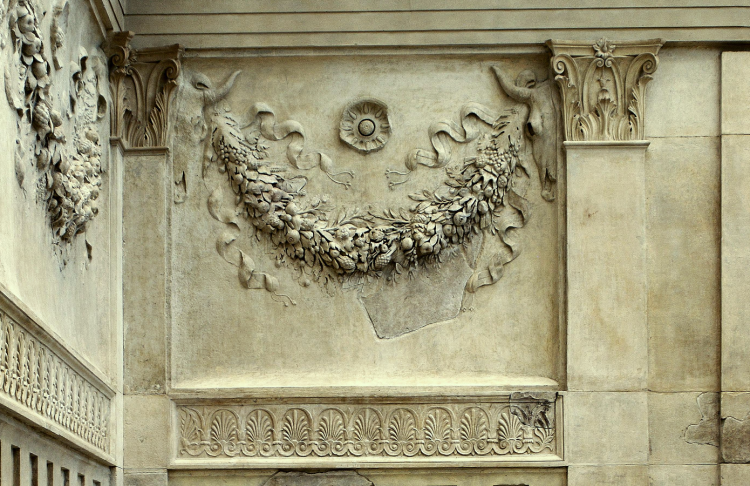
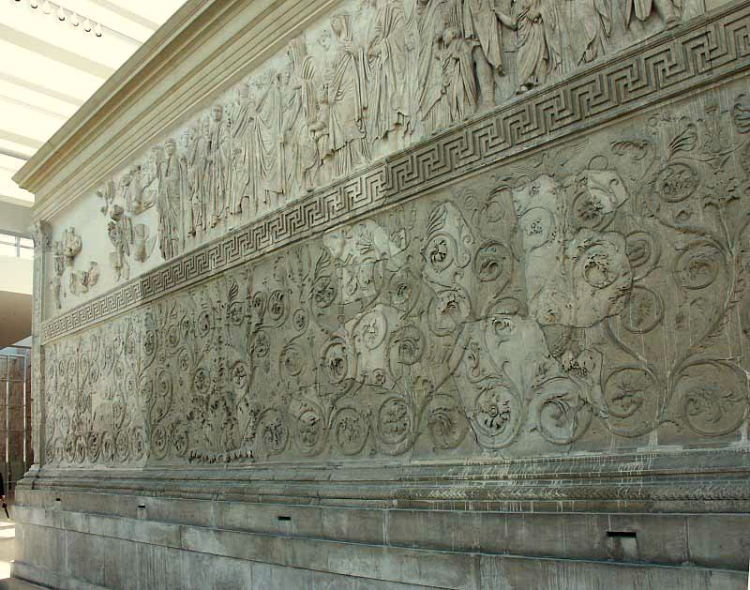






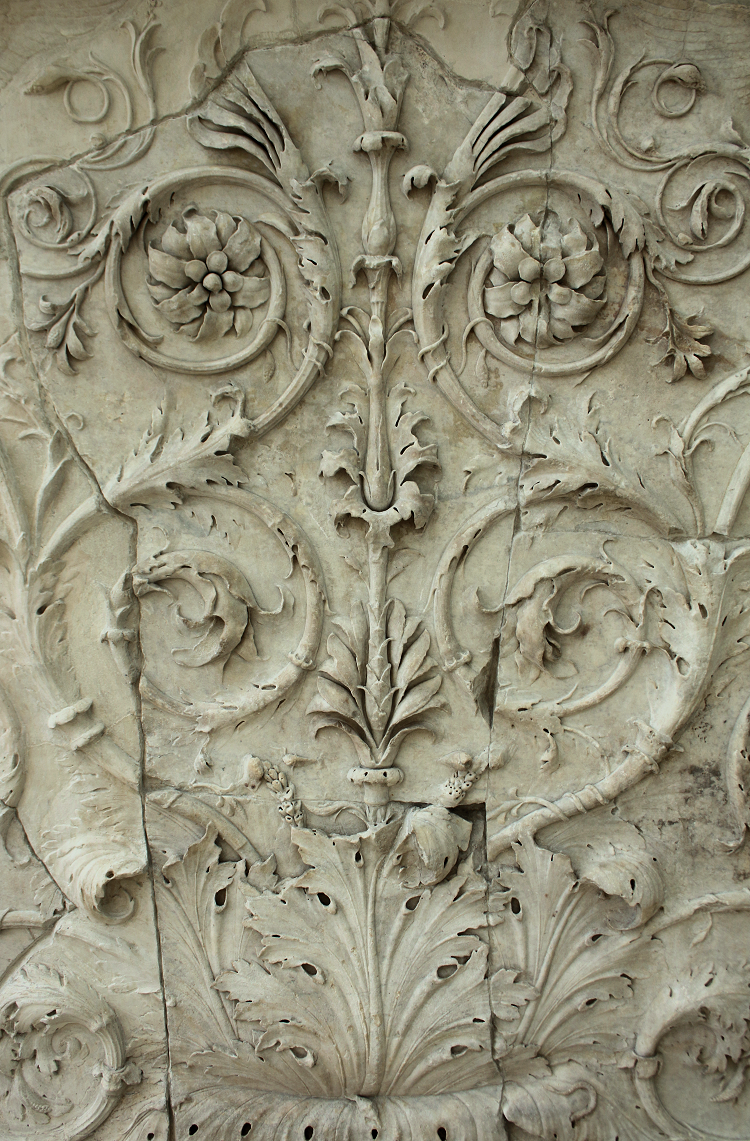





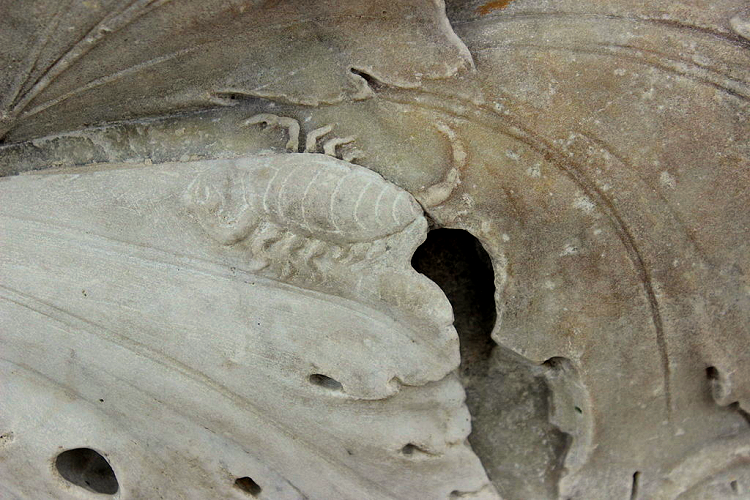







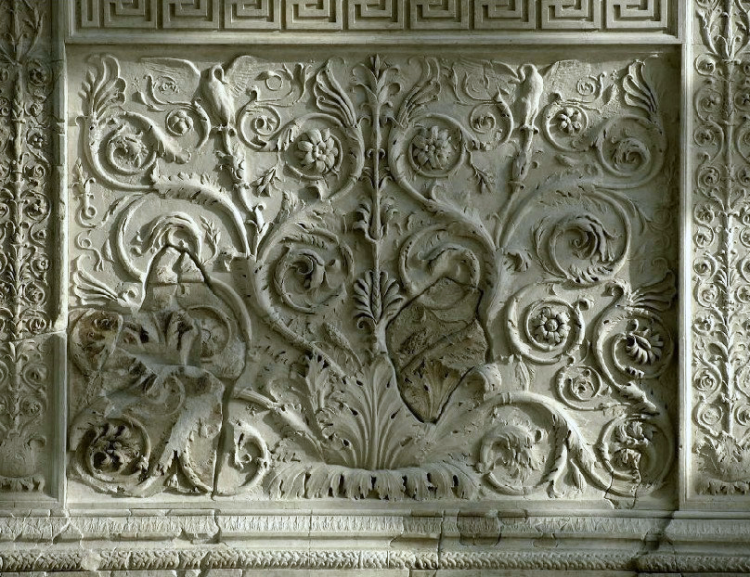



gosh ... i had no idea ... it really is rarther wonderful ... thanks
ReplyDelete